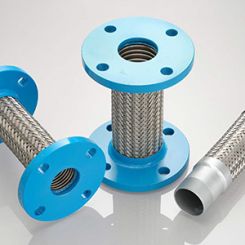For many of us, water is the only liquid that flows through our centrifugal pumps. Consequently, specific gravity (SG) and viscosity are not factors when sizing them. But, if you work with other liquids, you have to consider the effect of these properties on those water based, head/capacity curves. This month we will explore specific gravity's effect on the performance of a centrifugal pump.
The density of a substance is defined as its mass per unit volume, but here on the earth's surface, we can substitute weight for mass. At 39-deg F (4-deg C), water has a density of 8.34 pounds per gallon or 62.43 pounds per cubic foot. In the metric system its density is one gram per cubic centimeter, or 1,000-kg per cubic meter.
The term specific gravity compares the density of some substance to the density of water. Since specific gravity is the ratio of those densities, the units of measure cancel themselves, and we end up with a dimensionless number that is the same for all systems of measure. Therefore, the specific gravity of water is 1— regardless of the measurement system. Specific gravity is important when sizing a centrifugal pump because it is indicative of the weight of the fluid, and its weight will have a direct effect on the amount of work performed by the pump. One of the beauties of the centrifugal pump is that the head (in feet) and flow it produces has nothing to do with the weight of the liquid. It is all about the velocity that is added by the impeller. The simplest way to prove the validity of this statement is to use the falling body equation:
v2 = 2gh
Where:
v = Velocity
g = The universal gravitational constant
h = height.
This equation will predict the final velocity some object will attain when falling from some height (ignoring friction of course). When rearranged, it takes the form of h = v2/2g and predicts the maximum height an object can attain based on its initial velocity. The final velocity attained by a falling object is actually the same as the initial velocity required for it to rise to the same height from which it fell.
When this equation is applied to a centrifugal pump, h becomes the maximum theoretical head that it can produce. As the equation illustrates, that head depends upon the exit velocity of the liquid from the impeller vanes and the effect of gravity; it has absolutely nothing to do with the weight of the liquid.
The weight of the liquid does affect the amount of work done by a pump and, therefore, the HP required. A good way to understand the impact of liquid weight is to convert flow in GPM and head in feet into units of work. The equation below performs this conversion.
(gpm X 8.34 lb/gal X h) = w
Here the flow is multiplied by the weight of a gallon of water and then multiplied by the head in feet. The result is the work performed in ft-lb/minute. The equation shows us that the amount of work done by a centrifugal pump is directly proportional to the weight of the pumped liquid. If you divide w by 33,000, the result is the HP required at that particular point of flow and head. Figure 1 graphically illustrates this relationship. The downward sloping curve in the upper portion of the graph is the H/Q curve and the red, blue and green curves are the horsepower curves for three different liquids. The scale of the Y axis is both head and horsepower. The blue curve shows the HP required for water (SG=1). The red and green curves show the HP required to pump sugar syrup (SG=1.29) and gasoline (SG=0.71). If you analyze the three HP curves at each flow point, you will see that the increase or decrease is directly proportional to the specific gravity of that particular liquid.
As long as the viscosity of a liquid is similar to that of water, its specific gravity will have no effect on pump performance. It will, however, directly affect the input power required to pump that particular liquid. The equation below can be used to compute the horsepower required to pump liquids of varying specific gravities (where BHP is brake horsepower, Q is flow in GPM, H is head in feet, SG is specific gravity and Eff is the hydraulic efficiency of the pump). It assumes a viscosity similar to that of water.
BHP = (Q x H x SG) / (3960 x Eff)
Specific gravity can also have an effect on the onset of cavitation in a particular pump. Heavier liquids cause a proportional increase in a pump's suction energy and those with a high suction energy level are more likely to experience cavitation damage. Next month we will review the effect of viscosity on centrifugal pump performance.
Pumps & Systems, March 2009

